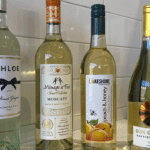Red wine is a type of wine made from dark-colored grape varieties. The color of the wine can range from intense violet, typical of young wines, through to brick red for mature wines and brown for older red wines. The juice from most purple grapes is greenish-white, the red color coming from anthocyanin pigments present in the skin of the grape. Much of the red wine production process involves the extraction of color and flavor components from the grape skin as opposed to white wines that are made without contact with the skin.
The winemaking process
The first step in red wine production, after picking, involves the physical processing of the grapes. Hand-picked or machine-harvested grapes are usually tipped into a receival bin when they arrive at the winery and conveyed by a screw mechanism to the grape-processing equipment
On arrival at the winery, there is usually a mixture of everything. From individual berries to whole bunches (particularly with hand-picked grapes), as well as stems, and leaves. The leaves and stems are removed at this point as their presence (stems) during fermentation can lead to a bitter taste in the wine.
After destemming, the grapes are commonly lightly crushed. Crushers usually consist of a pair of rollers, and the gap between them can usually be regulated to allow for light, hard or no crushing, according to the winemaker’s preference.
This mixture of grapes, skins, juice, and seeds is now referred to as must. The must is then pumped to a vessel, often a tank made of stainless steel or concrete, or an oak vat, for fermentation.
The preservative sulfur dioxide is commonly added when grapes arrive at the winery. The purpose is to prevent oxidation and sometimes to delay the onset of fermentation. Macerating enzymes may also be added at this stage, to aid extraction of color and fruit flavors from the skins and to facilitate pressing. Tannins can also be added to help stabilize color, prevent oxidation, and to help combat the effects of rot.
Fermentation
Once the must is in a fermentation vessel, any yeast naturally present on the skins of the grapes, or in the environment, will start the alcoholic fermentation, in which sugars present in the must are converted into alcohol with carbon dioxide and heat as by-products. Many winemakers, however, prefer to control the fermentation process more closely by adding specially selected yeasts. Several hundred different strains of wine yeast are available commercially, and many winemakers believe that particular strains are more or less suitable for the vinification of different grape varieties and different styles of wine.
Soon after the must is placed in the fermentation vessel, the separation of solid and liquid phases occurs. Skins float to the surface, forming a cap. In order to encourage efficient extraction of color and flavor components, it is important to maximize contact between the cap of the skins and the liquid phase. This can be achieved by:
- Pumping over (pumping liquid from the bottom of the tank and spraying it over the floating cap; normally this would be done several times per day during fermentation)
- Punching down the cap (either manually or using an automated mechanical system)
- Submerging the cap (the cap is kept beneath the surface of the liquid phase by a physical restraint)
- Drain and return (the liquid phase is drained off the skins into another vessel and then pumped back over the skins)
The fermentation produces heat, and if left uncontrolled the temperature of the fermenting may exceed 40°C (104°F), which can impair flavor and even kill the yeast. The temperature is therefore often controlled using different refrigeration systems. Winemakers have different opinions about the ideal temperature for fermentation, but in general cooler temperatures (25-28°C; 77–82.4°F) produce fruitier red wines for early drinking while higher temperatures (28-35°C; 82.4-95°F) produce more tannic wines designed for long aging
A second microbiological transformation commonly takes place after the alcoholic fermentation of red wines. This is usually referred to as the malolactic fermentation (MLF), in which malic acid, naturally present in grape juice, is converted into lactic acid under the influence of bacteria (it is not strictly a fermentation). MLF is almost universally practiced for red wines. It often occurs naturally, owing to the presence of lactic acid bacteria in wineries, but there are also commercially available preparations of bacteria to inoculate for MLF if necessary.
Once the MLF is complete, the red wine is usually racked (decanted) off its lees (dead yeast cells and other solids), and has sulfur dioxide preservative added to avoid oxidation and bacterial spoilage.
Most red wine is aged for some period before bottling, though this can vary from a few days, in the case of Beaujolais Nouveau to 18 months or more in the case of top Bordeaux reds. Aging can take place in stainless-steel or concrete tanks, or in small or large oak barrels. The latter impart some flavor to the wine as a function of their age and size (small, new barrels give more flavor than large, older barrels).
Most wines are filtered at some stage before bottling, although some winemakers use the absence of filtration as a marketing tool. Filtration serves to make wine completely clear and eliminate any remaining yeast cells and bacteria, which could render the bottled wine microbiologically unstable.



